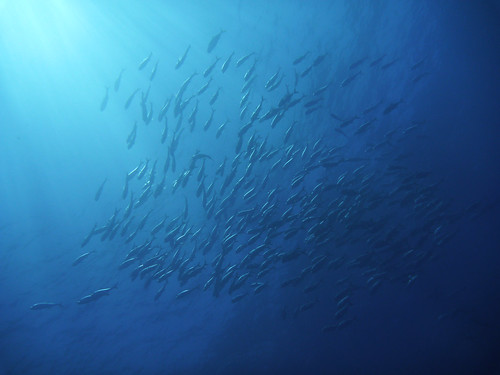 An estimated 47,000 to 105,000 fish aggregating devices (FADs) are currently in use worldwide to catch tuna and other species of fish, according to the Pew Environment Group. Pew released this first-ever estimate of the use of FADs at the Western and Central Pacific Fisheries Commission meeting yesterday to bring attention to this growing and unregulated fishing technique.
An estimated 47,000 to 105,000 fish aggregating devices (FADs) are currently in use worldwide to catch tuna and other species of fish, according to the Pew Environment Group. Pew released this first-ever estimate of the use of FADs at the Western and Central Pacific Fisheries Commission meeting yesterday to bring attention to this growing and unregulated fishing technique.“The deployment of tens of thousands of drifting fish aggregating devices in the world’s oceans with little to no oversight is extremely worrisome,” said Amanda Nickson, director of tuna conservation at the Pew Environment Group.
FADs are used by fisherman to attract tuna and other species of fish. They often extend 50 meters below the surface and can be made from a variety of materials, including bamboo floats, plastic ribbons, and old nets. They can be adrift for years at a time and attract a wide variety of marine life, including skipjack tuna, sharks, billfish, juvenile yellowfin and bigeye tuna.
FAD fishing is widespread and growing because of its increased efficiency—the devices allow more fish to be caught with less effort. This method is used to catch almost half of the world’s tuna and is contributing to the overfishing of bigeye tuna across the Pacific Ocean. In addition, sea turtles, sharks and juvenile fish are often caught and killed in the process of FAD fishing; hundreds of species are attracted by the floating devices.
Scientists are unclear about the overall impact of wide-scale FAD use on the marine ecosystem, yet the devices are being deployed in record numbers. Additionally, thousands of drifting FADs are lost or abandoned by fishing vessels every year, compounding an already serious marine debris problem.
“The fishing industry is not currently required to account for its use of FADs. It is being allowed to gamble with the health of the ocean, and it is time for governments to require full accountability and management of this proliferating and risky fishing gear,” said Nickson.
The Pew Environment Group estimate was obtained from data gathered from published scientific literature, industry expertise and documents from regional fisheries management organizations that oversee tuna fisheries.
At the Western and Central Pacific Fisheries Commission (WCPFC) meeting today, Pew called on governments to take action to require information sharing and other aspects of management and regulation of FADs. In the interim, Pew urges fishermen, fleet managers and satellite-buoy companies, all of whom know how many FADs are deployed, to cooperate with governments, fisheries management bodies like WCPFC, and scientists to share their data on numbers, locations and whether the devices have been retrieved.
To highlight this growing and harmful practice, award-winning filmmaker and marine biologist Rick Rosenthal, together with production company Wild Logic, is releasing never-before-seen footage of FADs and their use. This three-minute film illustrates why marine life is attracted to floating objects at sea, how vessels deploy FADs and what risks are posed by their use and proliferation. The film and an animation illustrating how FADs work is available here.
Photo courtesy of love flickr? via Flickr (CC BY 2.0)
